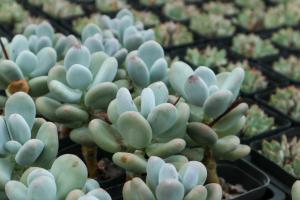What is the Common Ancestor of Water and Land Plants?
Plants are some of the oldest forms of life on earth, with the earliest evidence of photosynthetic organisms dating back over 3 billion years. While there are now countless species of land and water plants, they all share a common ancestor that emerged hundreds of millions of years ago. It is this common ancestor that paved the way for the diversification and evolution of plants into the myriad of forms we see today.
Emergence of Plant Life
The first land plants evolved from aquatic ancestors, specifically from certain forms of algae that were able to adapt to life on land. These early land plants emerged around 475 million years ago during the Ordovician period and included species of mosses, liverworts, and hornworts. While the first land plants were simple in structure and lacked roots, they paved the way for the eventual emergence of more complex plants.
Evolution of Vascular Plants
One major difference between early land plants and the more complex plants that dominate the landscape today is the presence of vascular tissue. Vascular plants, such as ferns and seed plants, have xylem and phloem that allow for efficient transport of water and nutrients throughout the plant. The emergence of vascular plants allowed for the growth of taller and more structurally complex plants that could better compete for light and resources.
The Common Ancestor of Water and Land Plants
The common ancestor of water and land plants is believed to have emerged around 500 million years ago, during the Cambrian period. This ancestor was likely a type of green algae that had the ability to photosynthesize and live in water. Over time, this ancestor gave rise to a variety of aquatic plants, including some that were able to adapt to life on land.
Adaptations for Life on Land
One of the major adaptations that early land plants needed to survive was the development of a cuticle, or a waxy covering on the outside of the plant's tissues that helped to reduce water loss. They also needed to develop root systems to anchor themselves in soil and absorb nutrients, as well as a way to reproduce without the need for water, such as the development of spores or seeds. These adaptations allowed for the emergence and diversification of land plants, including everything from towering trees to tiny mosses.
The Importance of the Common Ancestor
While the common ancestor of water and land plants may seem like a small, insignificant creature, it is actually of great importance in the history of life on earth. Without the adaptations and diversification that ensued after its emergence, the world as we know it today would be vastly different. Plants are integral to almost every ecosystem on earth, providing oxygen, food, and habitat for countless other organisms. Understanding the origins and evolution of plant life is essential in understanding the history of life on earth as a whole.
Conclusion
The common ancestor of water and land plants may seem like a distant and unimportant creature, but it is actually of great significance in the history of life on earth. Its emergence paved the way for the diversification and evolution of plant life into the countless species that exist today. By understanding the origins and evolution of plant life, we gain a deeper understanding of the history of life on earth overall.

 how many times do yo...
how many times do yo... how many planted tre...
how many planted tre... how many pine trees ...
how many pine trees ... how many pecan trees...
how many pecan trees... how many plants comp...
how many plants comp... how many plants can ...
how many plants can ... how many plants and ...
how many plants and ... how many pepper plan...
how many pepper plan...































